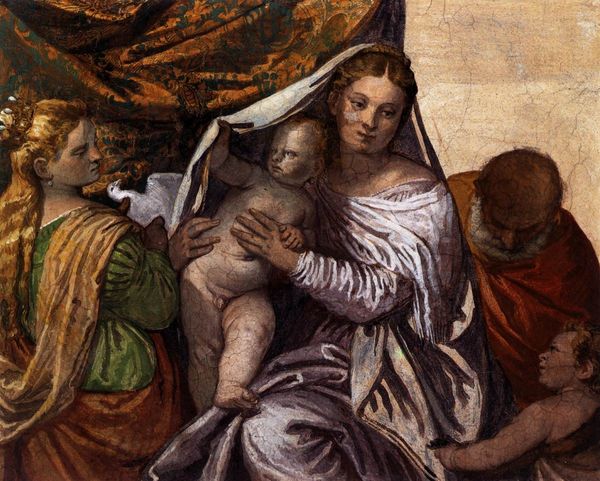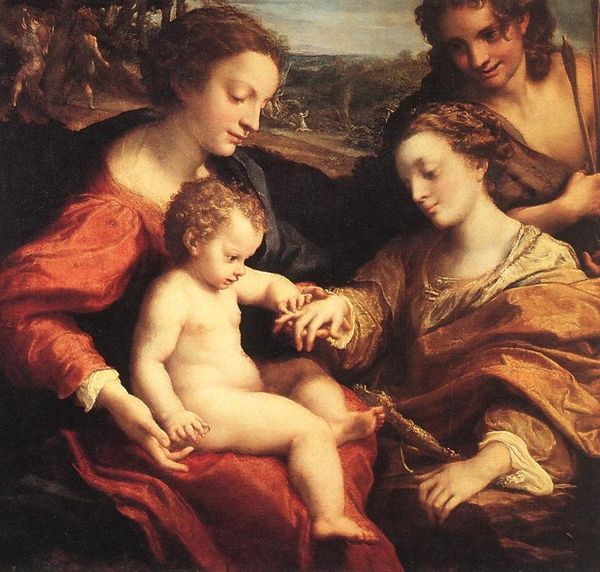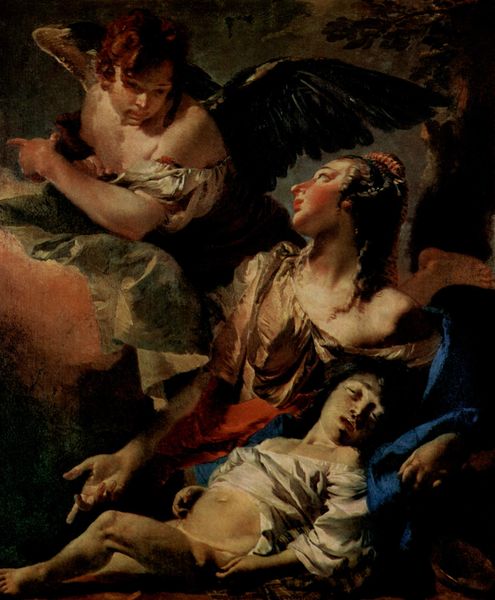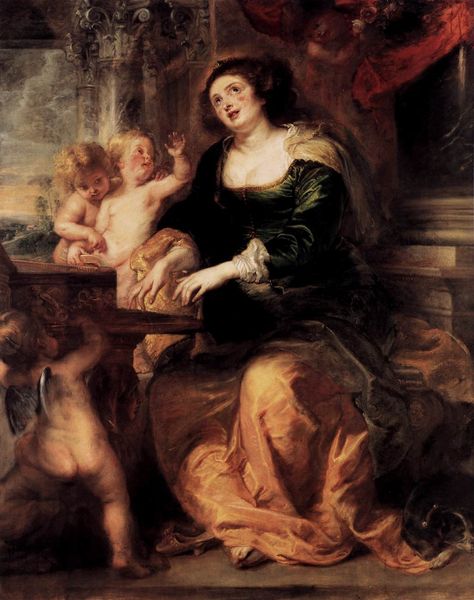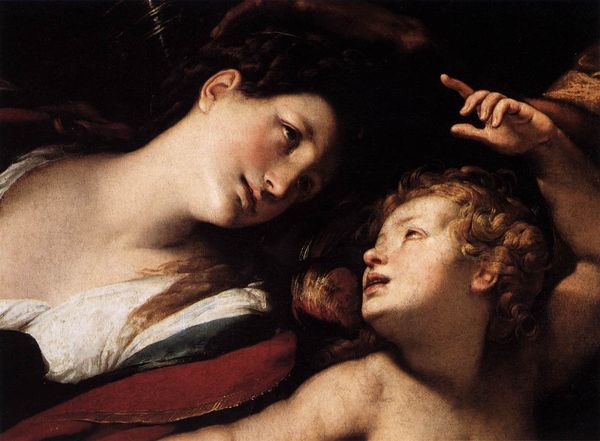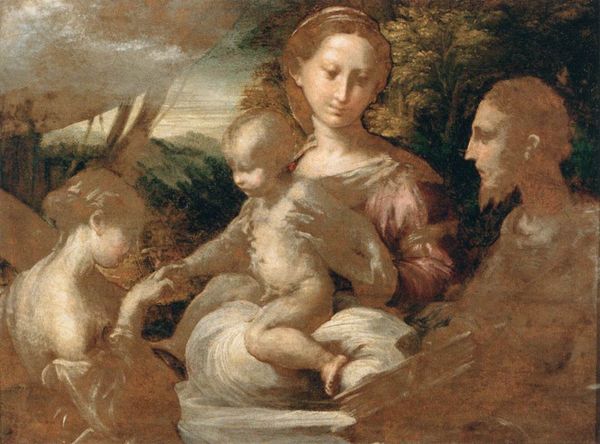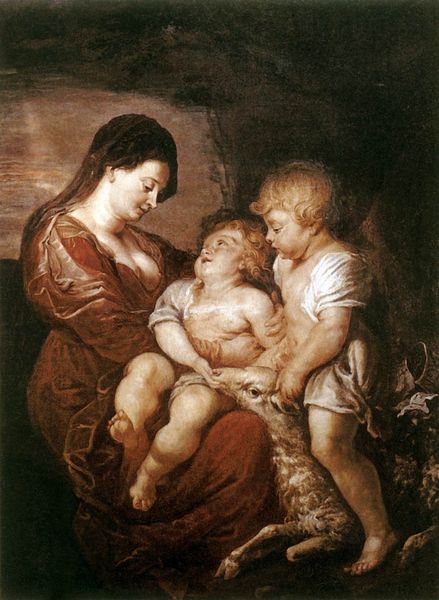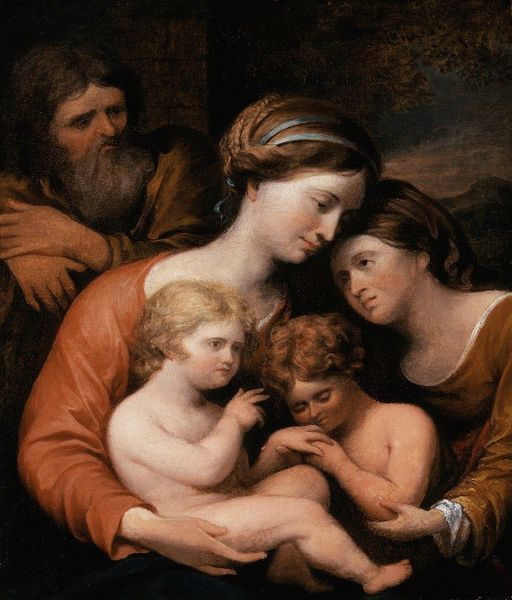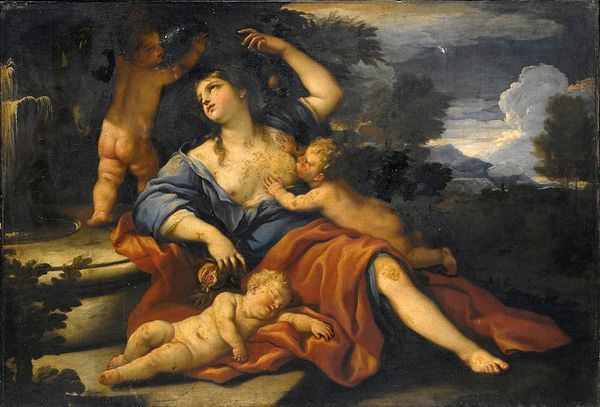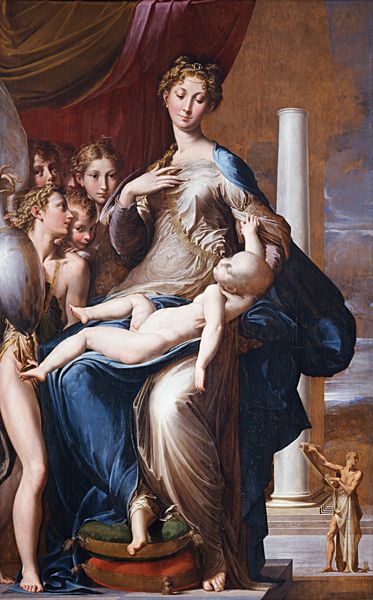
oil-paint, architecture
#
portrait
#
high-renaissance
#
venetian-painting
#
oil-paint
#
landscape
#
figuration
#
oil painting
#
christianity
#
history-painting
#
italian-renaissance
#
portrait art
#
architecture
#
christ
Copyright: Public domain
Editor: Parmigianino's "Virgin and Child," painted around 1527 using oil paint, presents a tender yet slightly melancholic scene. The Virgin’s elongated features are captivating. What strikes me most is the stark contrast between the architectural background and the softness of the figures. What do you see when you look at this piece? Curator: Well, I see a fascinating convergence of materiality and social commentary. Parmigianino, working within the High Renaissance, wasn't simply depicting a religious scene. Look at the pigments he employs. The source of these colors, where did they come from? What was the labor involved in grinding and mixing them? The deep blues, for instance, would have been extraordinarily expensive, reflecting the patronage of wealthy elites. Editor: So you’re saying that the very materials tell a story about wealth and power? Curator: Precisely. And consider the oil paint itself, a relatively new medium at the time. It allowed for layering and blending, enabling Parmigianino to create that ethereal quality you noted. But it also speaks to the growing importance of oil as a commodity, influencing global trade and even shaping social hierarchies. And look closely at the Virgin’s robe – can we really separate it from its status of precious, exotic commodity item? The labor involved in textile manufacturing and international trade adds another layer to its socio-economic understanding. Editor: That’s a perspective I hadn’t considered. So, even the artistic choices were influenced by materials available and what they represented in society at the time? Curator: Absolutely! The artistic and economic spheres are deeply intertwined. By understanding the materials and means of production, we gain insight into the societal structures that enabled and shaped the artwork itself. Editor: That’s amazing. I'll never look at oil paintings the same way again. Curator: Indeed. It prompts us to examine the relationships between the artist, the patron, and the broader world. The 'Virgin and Child' then reveals its deeper implications of economy, society, and material history.
Comments
No comments
Be the first to comment and join the conversation on the ultimate creative platform.
